Editor’s Note: I first published this in April of 2007. To this day it remains my most popular post, having been viewed some 95,000 times. I have since seen most of these movies, but my memory is too fuzzy to be able to write anything new about them.
—
Premiere magazine online has rolled out a new list. I love lists, I really, truly do. I know they don’t actually mean anything, and I know that often the conversations they start quickly move into rubbish, but I love them just the same. I do like to hear what other people say, to argue, and to find new things which I may consume and love.
This list is the 25 Most Dangerous Movies. They don’t do much to explain that except to mean more than just controversial, but controversial and important, or meaningful, or movies that make you think. Whatever that means.
I’ve included their words first, and then if I have seen the film, my own thoughts afterward.
 25. Bonnie and Clyde
25. Bonnie and Clyde
Premier: As shocking and stomach-churning as the picture’s legendary ambush-atrocity ending is, it only really works in context — that is, after you’ve spent more than an hour and a half getting to like the messed-up, bumbling, perhaps-not-quite-irredeemable criminals who are on the receiving end of a seemingly endless hail of bullets. (Their demise takes up only 21 seconds of screen time, but you’re praying “Make it stop!” throughout.) Outlaw lovers, incarnated by two of Hollywood’s most physically beautiful stars (Warren Beatty and Faye Dunaway), are reduced to carrion in nothing flat, and the rest is silence — deafening silence.
Me: It’s been a very long time since I have seen this film. It was one of the first DVDs I ever bought, but that was partially due to it being very cheap. I remember being confused, as a young man, by the ambiguous sexuality, but loving the crap out of Gene Hackman’s character. It also seemed kind of boring in parts to me then, as I was expecting a big action flick.
The performances, as I recall, were quite brilliant all around, and the robberies entertaining. I still remember the final shoot-out, and probably always will.
24. Boys Don’t Cry
Premier: “I don’t know who I am.” Such is the plaint of, well, just about everybody in this world at one time or another. Brandon Teena’s problem was that she did know who she was, but her body did not conform to it. Or perhaps that’s not it at all. Director Kimberly Peirce’s debut feature tells the true story of a Nebraskan girl (played, in a career-making performance, by Hilary Swank) who passed herself off as a boy and, in so doing, helped other girls find themselves. Boys Don’t Cry would be powerful and provocative enough if all it did was make you think hard about the difficult questions it raises concerning identity and difference. But the movie goes even further by showing how simple human violence can render such questions moot.
Me: Such a beautiful and sad film. It raises some big questions not only over sexuality and violence, but what one’s gender really means, and about our own personal identity. It doesn’t really attempt to answer these questions, as the violence pretty much destroys them before they’ve really formed. Hilary Swank’s performance is moving, strengthening, and unflinchingly sad.
23. In the Company of Men
Premier: Neil LaBute’s debut feature has a premise that can polarize audiences before they even see the film: Two corporate scumbags collude to seduce and devastate a fellow office worker, simply because, as the saying goes, they can. To top it off, the woman in question is deaf. On one level, Men is the nastiest shaggy-dog story ever concocted; on another, it’s a blanket denunciation of all that is male, American, and Caucasian; on yet another, it’s an enraged critique of, whatddya know, capitalism itself. Very clever of LaBute to camouflage his unfashionable politics with some of the most coruscating dialogue ever heard in a film.
Me: Absolutely brutal. The men in this film want to make me do something drastic with my own physical masculinity. They are the epitome of all that is wrong with being male. It’s a film I don’t want to like, or watch, but I couldn’t help but stare transfixed. Surely, I thought, they’ll come around and see the error of their ways. I was so totally wrong, I don’t even want to talk about it. The low-budget shows, and it’s not a film I’ll be watching again anytime soon, but I’m very glad it came across my screen.
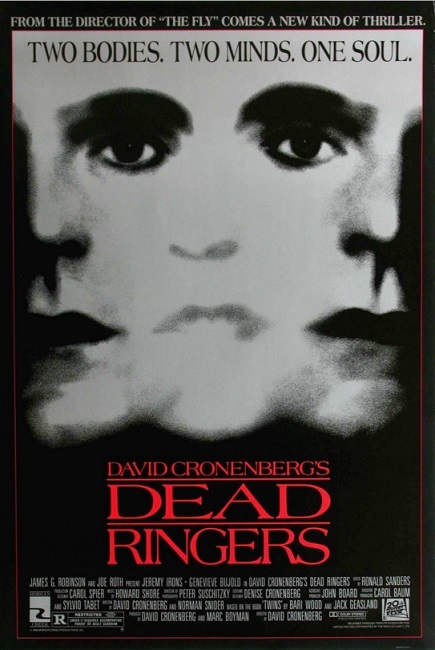
22. Dead Ringers
Premier: David Cronenberg takes the notion of the divided self beyond mere metaphor in this story (suggested by actual events) of identical twin gynecologists (both played, impeccably, by Jeremy Irons) and their descent into madness. The subject matter alone ensures an almost unprecedented level of creepiness, and you can bet Cronenberg makes the most of it; when one of the twins commissions a set of surgical tools for use on “mutant women” (for he is just about at the point where he thinks all women are mutants), it’s permanent gooseflesh time. But the picture ultimately goes deeper, plunging us into the desperate, confused loneliness to which we are all prey, whether we’re cursed with doppelgängers or not.
Me: Another film I saw too long ago to really remember. It’s painfully slow, horribly boring, and strangely transfixing. You would think a film about twin gynecologists going mad would be either titillating or fascinatingly twisted, but mainly it’s methodical. That’s Cronenberg though. He never gives a quick jolt when he can linger slowly. This isn’t to say it isn’t a good film, for it is, just not something I’m all that excited about watching again, even if age may give me a much greater perspective.
21. Eraserhead
Premier: You’ve heard of new-wave movies? David Lynch’s debut is a no-wave movie, projecting a fear of sex (among other things) so palpable that one could deem it the male-perspective version of Repulsion. Shot in deepest, darkest black and white, it sees universes in clouds of eraser dust and contains a chicken scene that outdoes both John Waters and the Farrelly brothers. The fact that Lynch still hasn’t revealed how he made the movie’s notorious baby just makes the sight of it more squirm-inducing with each viewing. Not to be watched, under any circumstances, by expectant couples.
Me: Cripes, what a film! Like so many David Lynch films the plot is very muddled, but visually it is absolutely stunning. The deep black and white photography is beautiful even if the images it is showing are completely disturbing. And yeah, that baby is whack.
20. Gimme Shelter
Premier: Brothers Albert and David Maysles, with codirector Charlotte Zwerin, didn’t see Altamont coming when they set out to make a documentary of the Rolling Stones’ 1969 North American tour. The picture they constructed in the aftermath of that anti-Woodstock, where some Hells Angels stabbed a gun-waving black concertgoer to death, is complex and perpetually unsettling, full of portents that the Age of Aquarius isn’t due for a terribly long engagement. Even before the violence starts mounting, the film depicts a bunch of kids who are far from all right; the final shots, of scattering silhouettes on what could be a lunar landscape, are among the most desolate ever put on a movie screen. Not only is the dream over, the filmmakers seem to be saying, but maybe the dream itself wasn’t worth all that much to begin with.
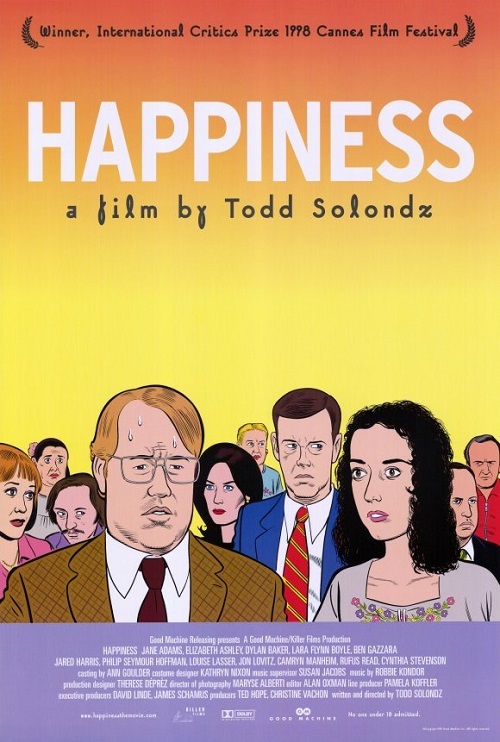
19. Happiness
Premier: Here is a film that at one point creates the most insidious suspense scenario since audiences rooted for Marion Crane’s car to sink into the swamp in Psycho. We bite our nails as a future child molester frets over whether or not his intended victim will ever eat the doped-up tuna salad sandwich he’s prepared. This is viewer manipulation on a level that even Hitchcock wouldn’t dare; no wonder some critics accused writer-director Todd Solondz of grandstanding. Except that he isn’t; nor is he merely poking cheap fun, which was how many took the scene where two of the picture’s very unattractive characters fall into a clinch with an Air Supply song providing the soundtrack. No, Solondz is merely sharing, making manifest a variety of private hells and insisting that they are each all too human.
Me: I’ve seen this two and a half times. The third time I just couldn’t make it through. Every character is horrid, despicable, disgusting, and painfully real. When I first read that it had made a pedophile character sympathetic I scoffed. In the first 3/4ths of the film, I wondered what they were talking about. Then there is the scene between said pedophile and his son, explaining why he was going to jail. I was moved. I cried. Managing to make me feel for such scum as that, is quite a thing.
18. Bad Lieutenant
Premier: Betting money he doesn’t have, letting robbery suspects walk, boozing it up with whores, smoking heroin with a gamine-ish smack connoisseur, pulling over a pair of bridge-and-tunnelers and pulling out — no, it’s too much. Harvey Keitel’s performance as the world’s most rotten cop has a stunning, savage honesty. Stripped naked and howling, he’s an open wound, the supreme passion player in what is, finally, a tale of redemption and one of the few truly religious films of the 20th century.
17. M
Premier: “Ich muss!” shrieks trapped child-killer Peter Lorre to the kangaroo court of thieves, holdup men, gamblers, and prostitutes who have gotten to him before the police could. (They are, perhaps understandably, irritated that his activities have resulted in a municipal crackdown that’s cutting into the vice business.) He must, he protests, then quite rightly insist that none of them know what it’s like to be him. But Fritz Lang’s technically stunning, emotionally wrenching thriller, his first sound film, dares to try and bring the viewer into the world of this pathetic murderer, who, finally, is something of a child himself.
Me: Love this film. Probably my favorite out of the whole list. Just a beautifully crafted film. Peter Lorre is perfect as the creepy, whistling murderer, and just like the pedophile of Happiness, he makes me feel for him.
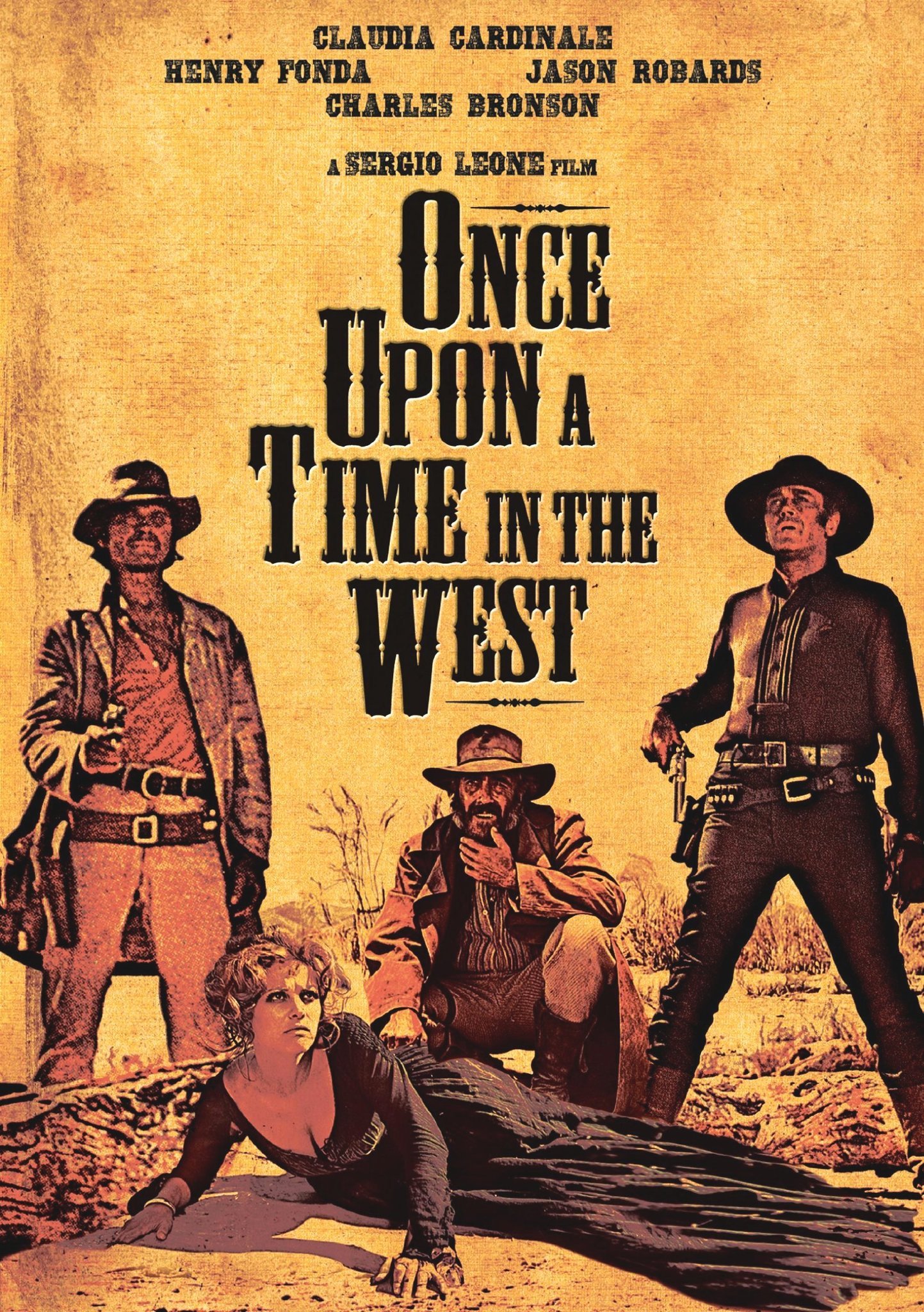
16. Once Upon a Time in the West
Premier: The movie begins in virtual silence — a ten-minute credit sequence punctuated only by a few ambient sounds (a fly buzzing, a wheel squeaking, a telegraph tapping, a scrap of dialogue), culminating in a typical western shoot-out. Then the scene switches to a homestead, where, with a single gunshot, director Sergio Leone blows away every romantic Hollywood myth about the West.
A boy runs out of his house to see that his entire family has been slain. Five marauders emerge from the brush. The camera pans around to see the face of their leader, and we see with astonishment that it’s the reassuring visage of Henry Fonda. He spits, raises his pistol… and shoots the kid. The scene was written with Fonda in mind, and Leone persuaded the star, whose screen presence was synonymous with heroes such as Abraham Lincoln, to make the film by describing this icon-shattering moment.
As an Italian working in the most American of genres, Leone knew the power of stepping out of context. The western would never be the same.
Me: I had only seen a handful of Fonda films before this one, so he wasn’t etched into my brain as super wholesome. But those beautiful blue eyes holding such cold menace is a sight to see. The opening sequence is one for the ages. Just brilliant as all get out, and what follows does fall far from that.
15. A Clockwork Orange
Premier: Its director, Stanley Kubrick, obviously thought this picture was dangerous in a more than merely existential way: In 1972, he withdrew it from exhibition in Great Britain — a self-imposed ban, if you will, that stayed in place until March 2000, a year after Kubrick’s death. The ignorant brutality (coexisting so comfortably with rakish charm) of its droog antihero Alex is one thing; the picture’s indictment of society’s ability to give birth to such brutality and then have no clue about how to deal with it is another. But what makes the film really hurt is its cold, clinical kick in the teeth to things we used to consider innocent sources of pure joy — e.g., the song “Singin’ in the Rain.”
Me: This film became something of a legend in college. There became a kind of club formed around those who had seen it. I remember seeing the last half hour of the film on cable and being absolutely mesmerized. It was another several months before I saw the beginning, but I was no less transfixed then. It is a disturbing film. It gets right into your bones. It helps that Kubrick is so technically amazing, and the set design is so ludicrous it seems surreal.
14. Repulsion
In this remarkable Roman Polanski film, as in Jean Cocteau’s Beauty and the Beast, the walls have arms — not to provide illumination but rather to grab the impossibly beautiful and limitlessly terrified Carol Ledoux (Catherine Deneuve). The movie unsparingly yet sympathetically charts the sexually repressed young woman’s breakdown on a weekend when her slatternly sister takes off with an oily boyfriend. Ledoux’s nightmares are so utterly, unforgettably convincing that you’re sure her eventual victims really have got it coming; witnessing the insanity is a dead rabbit whose disposition hardly improves with prolonged lack of refrigeration.
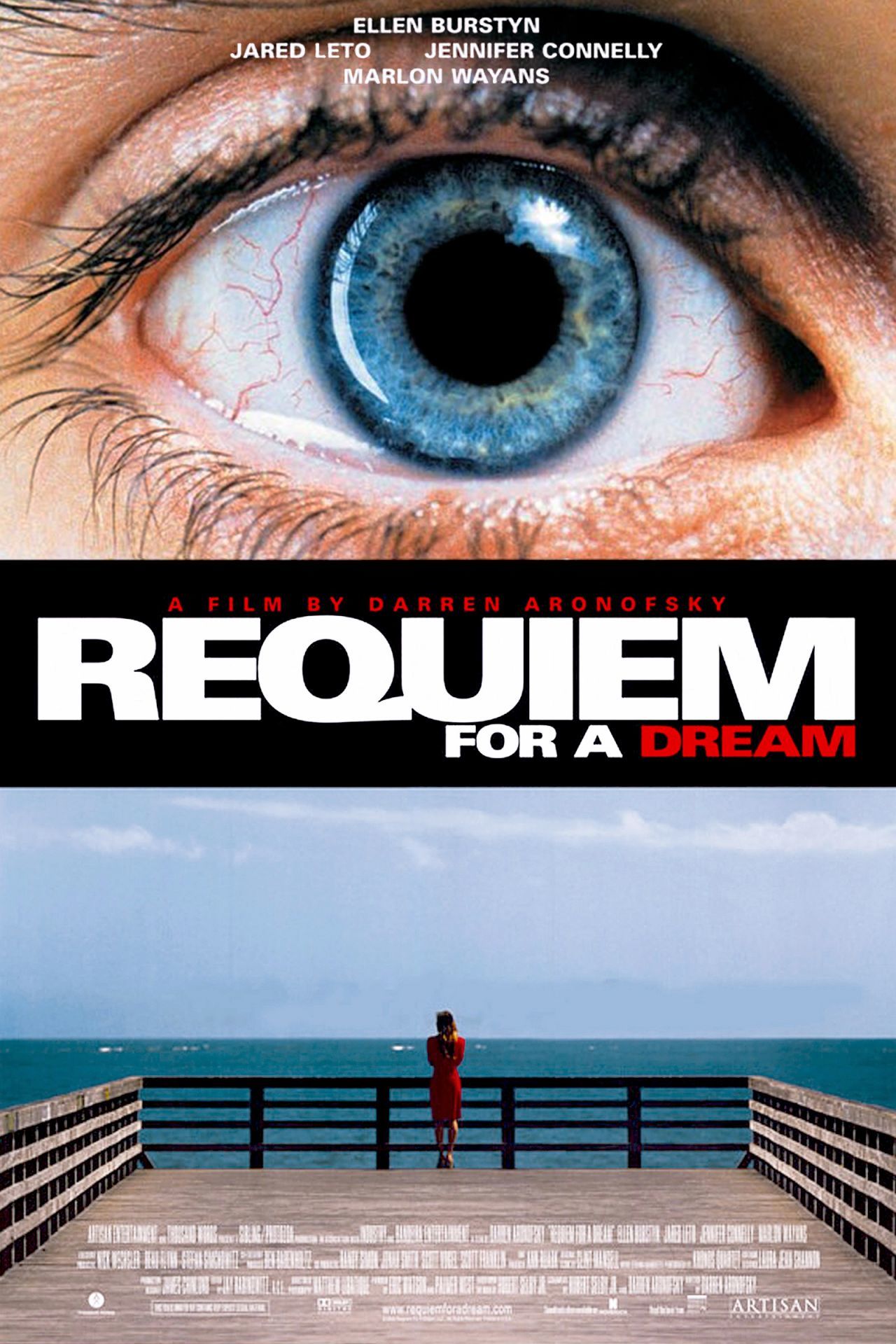
13. Requiem for a Dream
Premier: Chronicling the downward spirals of four characters who have ceased to get high on life, Darren Aronofsky’s film of Hubert Selby Jr.’s novel posits addiction as the defining factor of the human condition. Unlike so many other depictions of the junkie lifestyle, it never makes drug-taking look cool — Nancy Reagan might have found this a useful movie. While Aronofsky’s polyglot technique is sometimes overbaked, the movie’s best moments are as harrowing as he wants them to be, and the conclusion — that addiction to hope is perhaps the most insidious jones of all — is genuinely chilling.
Me: I remember reading somewhere that if you pictured the addiction as the hero of the film it worked like a normal kind of story – it is victorious in the end. Aronofsky liters the picture with interesting camera angles, and tripped-up shots to give the viewer an itchy crazed feel, but it is the performances by the actors that give the film legs.
12. Reservoir Dogs
Premier: The shocking moment that everyone remembers isn’t actually in the movie. When Michael Madsen’s Mr. Blonde cuts off the ear of the cop (Kirk Baltz) tied to a chair, the camera demurely pans away. But Quentin Tarantino, directing his first film, ratchets the tension so high and establishes Mr. Blonde’s casual brand of sadism so effectively that you imagine he shows more than he does in this tale of a botched robbery. “The movie itself is an implication,” Madsen says. “You never even see the robbery, but you sure think you have.”
Tarantino did shoot a more graphic version of the torture. “We had a tube running up to where the ear gets cut off,” Baltz recalls, “and there was a guy pumping blood so it was squirting out.” Says Madsen of the scene as it ultimately played out, “I thought it was rather tame.” Few others — teased and agitated by Mr. Blonde’s bopping to the song “Stuck in the Middle With You” as he wreaks havoc — would agree. To prepare for the role, Baltz asked Madsen to lock him in the trunk of his car. “I thought he was insane,” Madsen says. “I went through the drive-thru at Jack in the Box and got a Coke. Quentin was a little distraught. When we popped open the trunk, Kirk was awful sweaty.” Just as the scene begins, you can see Madsen leaning against a pole, sipping that Coke.
Me: I first watched this at my uncle’s house. He was a conservative Christian who was working in his study while I watched. Somewhere around the halfway point I had had enough and turned it off. From the study came “I’m proud of you Mathew.” I’m not so sure he’d be proud anymore as I have it in my DVD collection along with an assortment of other films of uncertain moral fiber.
I watched it all the way through in college, late at night, in a tiny little dorm room. There were a dozen of us or so crammed in that room, enthralled by what was going on. But of course, we don’t see anything in the ear scene. That’s what makes it so shudder enducing. If we had actually seen the ear come off, it would be fun, and not so harrowing. It’s like the scene in Pulp Fiction where Uma has the adrenalin injection. It is the reaction of others that makes it remarkable.
11. The Sweet Hereafter
Premier: The incest subplot is a jawdropper and heartbreaker, but this movie really haunts you with its even-handed, compassionate, and yet utterly anguished perspective on the inevitability of death and the indifference of the universe. Watching that school bus go down through the ice from an omniscient long shot, one feels even more helpless and doomed than if director Atom Egoyan had actually put his camera in the bus as it sank. This will happen, one way or another, to you and me too, Egoyan is saying; and he can’t tell us how to deal with it.
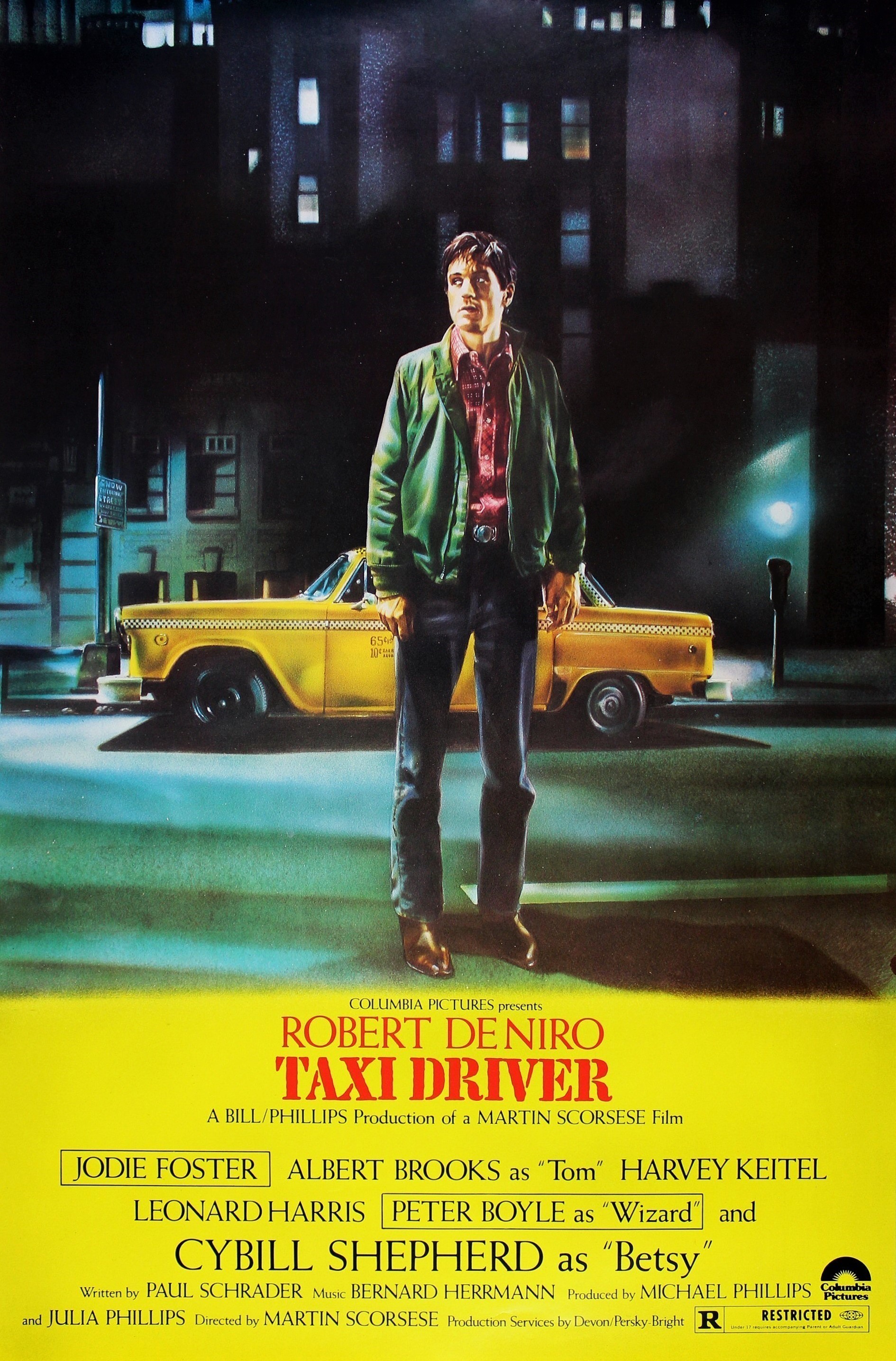
10. Taxi Driver
Premier: The New York City that Taxi Driver depicts has been almost entirely torn down; Robert De Niro now isn’t nearly as “cool” as he was then. You’d think these factors would weaken the movie, but, in fact, this bloody drama of urban alienation only gains in power as it grows further removed from the time in which it was made. Today, for some reason, the unwholesome emotions screenwriter Paul Schrader and director Martin Scorsese were trying to exorcise are closer than ever to the surface of the screen. And they are unwholesome emotions — tragic, desolate, angry ones. Back in the day, the “You talkin’ to me?” sequence seemed like the movie’s key scene, but it’s more likely that the real core of Taxi Driver is the part where De Niro watches two lovers quarreling in a soap opera and, feeling no connection with anything, just lets the TV fall on its back and short out.
Me: I was too young the first time I watched this film to really grasp it. I must have been 16 at the time, and with a driver’s license, for this is surely not a film mother would have rented for me, and I didn’t have friends that interested in film. I was just starting to get into film study as art and had always heard this one was brilliant. I liked it at the time but didn’t really understand what was going on. In the years since I have come to love this, and nearly all other Scorcese films.
09. Blue Velvet
Premier: Long before the white picket fences, red roses, and suburban dysfunction of American Beauty, there were the white picket fences, red roses, grub beetles, decaying ear, and small-town dysfunction of David Lynch’s corrupt fantastia Blue Velvet. At a time when audiences were flocking to the sanitized rah-rah Americana of Top Gun, the spectacle of a snooping college student forced to strip at knifepoint by a crazed lounge singer just before a spectacularly profane, gas-sniffing psychopath named Frank Booth appears and does sexual gymnastics involving pieces of a blue velvet rode was appealingly, or appallingly, subversive.
But this audacity was precisely what Lynch intended, despite the seeming naïveté he exhibited. “David Lynch, at that time, was such a Boy Scout. And I mean that in a sweet way,” laughs Dennis Hopper, who played Booth. “He would say things like, ‘Oh, that take was peachy keen!’ or ‘That’s solid gold!’ It was like Howdy Doody was directing. Or he’d say, ‘Now when you say that word…’ And I’d say, ‘David, that word is fuck.’ And he wrote the script!”
At screenings, the actor says, people fled the theater in disgust. Lynch’s twisted imagination, combined with genuine innocence, had opened the door to the unexplored world of the irrational and absurd. Hopper says, “I really feel that Blue Velvet was our first American surrealist film.”
Me: One of the first art films I ever loved.
08. Dancer in the Dark
Premier: Splicing together The Passion of Joan of Arc, The Umbrellas of Cherbourg, and A Short Film About Killing onto a grim fairy-tale spine, Lars von Trier’s divisive musical tragedy is some kind of filmmaker’s film, to be sure. But whether you’re familiar with its influences or not, the relentlessness of its tragic-story trajectory and the almost embarrassing intensity and intimacy of Björk’s performance, as the ultimate self-sacrificing mom (she makes Stella Dallas look like Auntie Mame), combine to produce a viewing experience that’s at first intriguing, then uncomfortable, then utterly overwhelming. It’s a little facile to call Dancer an anti-death penalty parable, but then again, it might be worthwhile to screen it for the capital-punishment maven in your life.
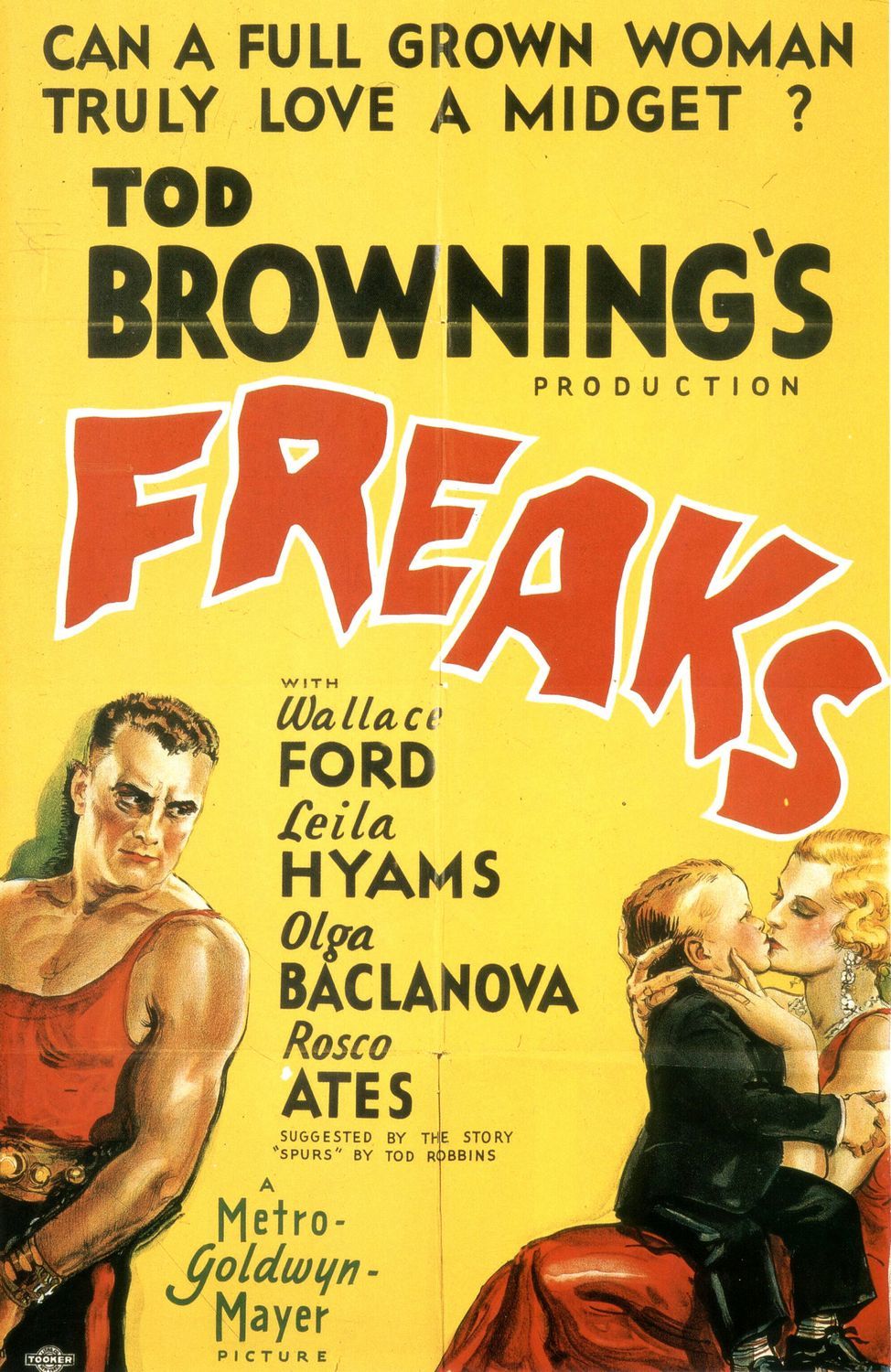
07. Freaks
Premier: Its title characters — midgets, pinheads, bearded ladies, limbless wonders, and such — are circus performers who, shunned by the “normal” world, form their own loving, microcosmic society. Then a little fellow’s good fortune excites the interest of a gold-digging trapeze artist. “One of us! One of us!” chant the freaks at the most unnerving wedding reception ever filmed; their shock and disappointment upon learning that the gold digger has, in fact, zero interest in becoming one of them is all the more moving for being so awkwardly acted. The outside world’s cruelty then causes these innocents to take a grisly vengeance. This is a trip into another world, with a surprising, and most vehemently stated, message at its core: Don’t mess with family.
Me: I saw this in college with a bunch of friends and we were all equally disturbed and fascinated by this film. .
06. Peeping Tom
Premier: For anyone who ever thought moviemaking, or even moviegoing, was a fairly innocent pursuit, here master director Michael Powell levels a savage indictment against both himself and us, insisting that the voyeuristic compulsion of his soft-spoken lead character (a killer who films the deaths of his female victims — deaths that he actually forces them to witness themselves) is one we all share. The picture is all the more unsettling for being so beautifully made.
Me: I remember wondering how in the world this film got made in 1960 with the kinky voyeuristic sex, the wild violence and the filming of said violence. Upon reading further I found that it pretty much did ruin Michal Powell’s career. Watching it now, it winds up being fairly tame, and amazingly prescient. In a world full of reality television, and saturated violence (not to mention live, streaming videos full of sex and violence on the internet) this tale is amazingly current.
05. The Lost Weekend
Premier: Sure, the bit with the bat doesn’t quite make it anymore, but nobody ever claimed Billy Wilder was a master of special effects. He does, however, have an uncanny way of plumbing the darker recesses of the human heart. Combine that with the story of a writer battling alcoholism and the result is a movie that stings with the power of the most remorseful, impossible-to-squelch hangover ever. The scene of Ray Millan walking down Third Avenue looking to hock his typewriter for a drink is the ultimate trip down lonely street.
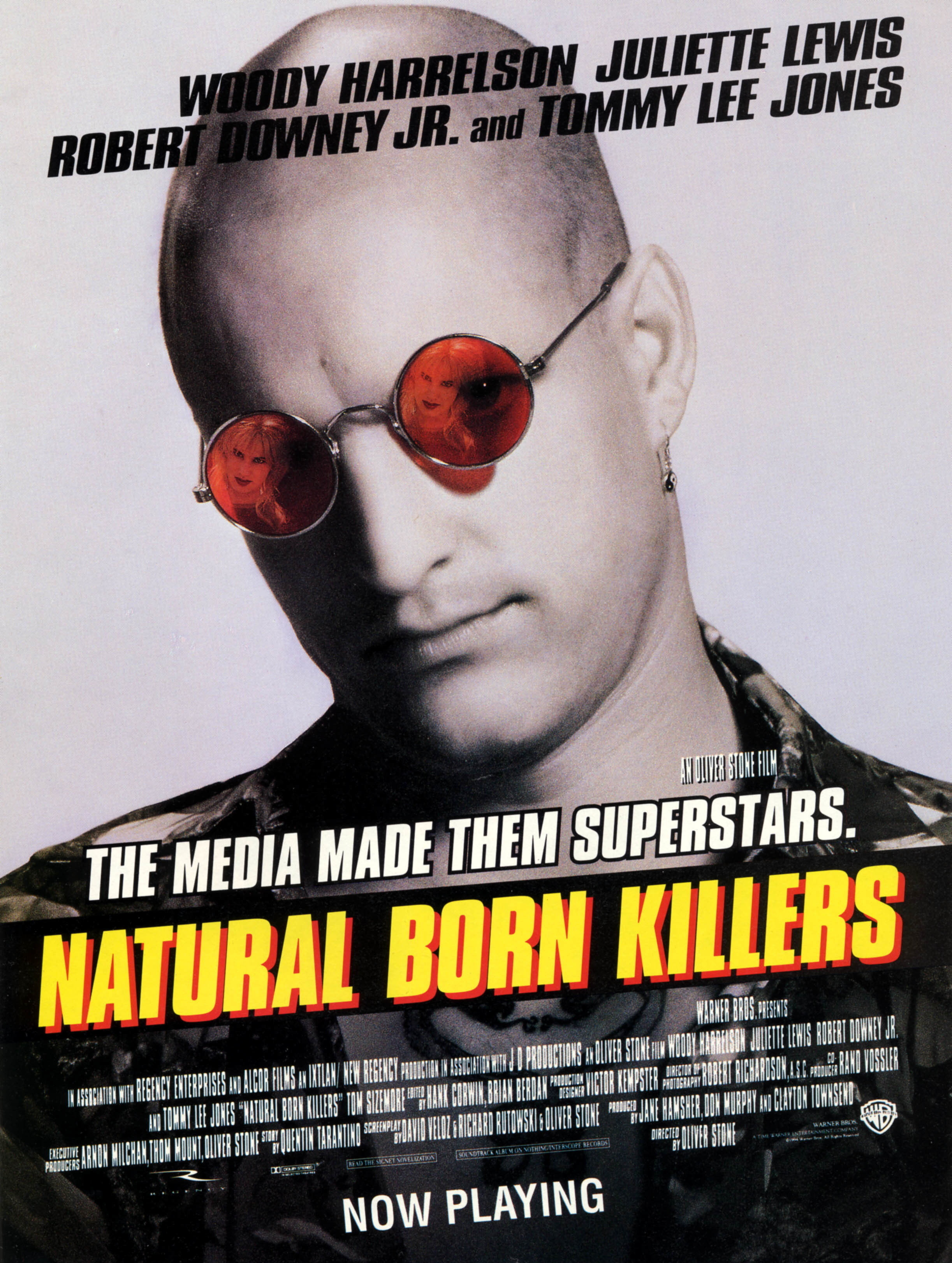
04. Natural Born Killers
Premier: As obvious, ham-fisted, and often downright silly as it is, Oliver Stone’s ultra-controversial (there’s been at least one lawsuit filed claiming it inspired actual murders) portrait of a Bonnie and Clyde for the MTV generation manages to get somewhere. Maybe it’s the sheer sensory overload. Maybe it’s the raw power of the performances, from the feral Juliette Lewis to the dripping-with-sleaze Tom Sizemore. Or maybe it is, in fact, the film’s rabid exuberance, the very real and very scary nihilism that seems to lurk underneath its glib pronouncements on our “sick” society.
Me: I saw this three times in the theatres, and a couple of times on video, and I suspect I’ll never watch it again. It is such a sensory overload type of film, that I felt, at the time, that I had to watch it several times. But having done that, it’s not something I care to watch again. It has some interesting parts, and certainly, there’s something being said, but I think he mainly fails at making his point. I get that he’s trying to point out our culture’s obsession with celebrity and violence by making a film full of celebrity love and violence, but he goes so over the top with it, that the finger points back directly at him. Definitely a film worth seeing though. Perhaps more than once.
03. Romper Stomper
Premier: Or, Nazi-Worshipping Skinheads Have Feelings, Too. Which may well be true, but is it a point worth making? And what, exactly, is director Geoffrey Wright saying by casting the unfailingly charismatic Russell Crowe (in an early lea,ding role) as the ringleader of the skinheads? No way does Stomper endorse the bigotries of these hooligans, and the film is pretty definite in its view that their lifestyle is nasty, brutish, and short. But by making these kids characters (as opposed to caricatures) and allowing them their anger, the movie shakes up your complacency, forcing you to acknowledge that they are, in the end, members of the same species as you.
02. Un Chien Andalou
Premier: Luis Buñel and Salvador Dali’s infamous 16-minute film insouciantly mocks would-be explicators with its uninterpretable images, which cook up a death’s-head soup of anxiety. The liquid of the slashed eyeball, the putrefying wounds of the dead donkeys that adorn a pair of grand pianos, the blood caking on the chin of a man in the throes of unspeakable sexual ecstasy — the movie is a sticky orgy of lust, ooze, and rot, no less funny for its power to get under your skin and stay there.
01. Weekend
Premier: Apocalypse ’67. A bickering bourgeois couple, already drunk on betrayal, set out on a little excursion. It goes very badly even before it starts. From the epic traffic jam they almost immediately drive into, to a diversion into a curdled Lewis Carroll parody, to a final capitulation to a group of counterculture cannibals who make the future Baeder-Meinhof crew look like the Mickey Mouse club, Jean-Luc Godard’s film — work completely drained of the sort of exuberance that marked his debut, Breathless, — is an exhausting proof of Yeats’s prediction that “things fall apart/the centre cannot hold.” As much an expectoration as a work of art, Weekend’s entirely apt and believable end title reads “Fin du Cinema.”

Thanks. Yes, Gimme Shelter is one of those films I know I should see, but have never managed too. Someday.
I’ve seen twelve of these.
-Khan
http://rottentomatoes.com/vine/j/akhan41
Un Chien Andalou is definitely worth seeing. I watched it in film class, probably some of the strangest 14 minutes of my life.
I’ve seen eleven of these, and now I want to see more.
SALO should definitely be on this…insanely disturbing, but some would say artistic and absolutely one of the most controversial movies of all time
I would add “Pink Flamingos”!
I saw Boys Don’t Cry, and i cried like crazy. It came on HBO one night and I was bored and i watch it a couldn’t sleep for weeks. All i wanted was for someone to hold me and tell me that it just a movie and you will be alright. 😦
fightclub and scarface should be there i prisoned from watching these religously
Hard to believe that the works of Larry Clarke aren’t on this list; Kids, Gummo, Bully, etc.
Totally agree that Kids should be on here!!
Gummo was directed by Harmony Korine (who wrote Kids). Just sayin’.
I’ve seen many of these but watched Happiness due to your description. It was one of the finest and most repulsive black comedies I’ve ever seen. I can’t believe it got made. Thanks for the suggestion.
Fight Club?
Why isn’t Tin Drum in there!?!?
Good List, I’ve seen some of these films, The Bad Lieutenant and Taxi Driver are among my favs. Romper Stomper is a film worth seening but very disturbing along with clockwork orange, blue velvet, and Reqiuem for a Dream. I definitely agree with Jaime that ‘Kids’ should be on the list. A couple other suggestions: Michael Moore films, The Deer Hunter,Faces of Death
I would replace Reservoir Dogs with Oliver Stone’s JFK and Once Upon a Time in the West with The Dark Knight because sadly we’ve seen just how powerful that film and fandom really was last July at The Dark Knight Rises premier.
The Devil’s Rejects should be added to this list. It’s bazaar how much you can’t stand Baby, Otis, and Captian Spaulding (not me because I’m a weirdo and I loved these guys from the get go when I saw House of 1000 Courpses) at the beginning of the movie, but once you get towards the end of the movie you’re loving them! Just like Bonnie and Clyde, I felt the same way. But something about The Devil’s Rejects is different. Rob Zombie did a great job.
this one was made after the list waspulled together, but should be there: Irreversible (2002)
Sexy Beast anyone?
Pingback: Italian neorealism, meta-sensationalism, and #ByeFelicia: Why ‘Friday’ is the apex of 20th century indy cinema – Scott E. Frankel
Pingback: Ten Years of Bootlegs: Abandoned Desire
Gus Van Sant’s ‘Elephant’ should definitely be on this list.
Pingback: Ten Years Of Bootlegs: The Ten Most Popular Non Bootleg Posts
I’ve seen many of these movies, but look forward to Weekend for the first time tomorrow.